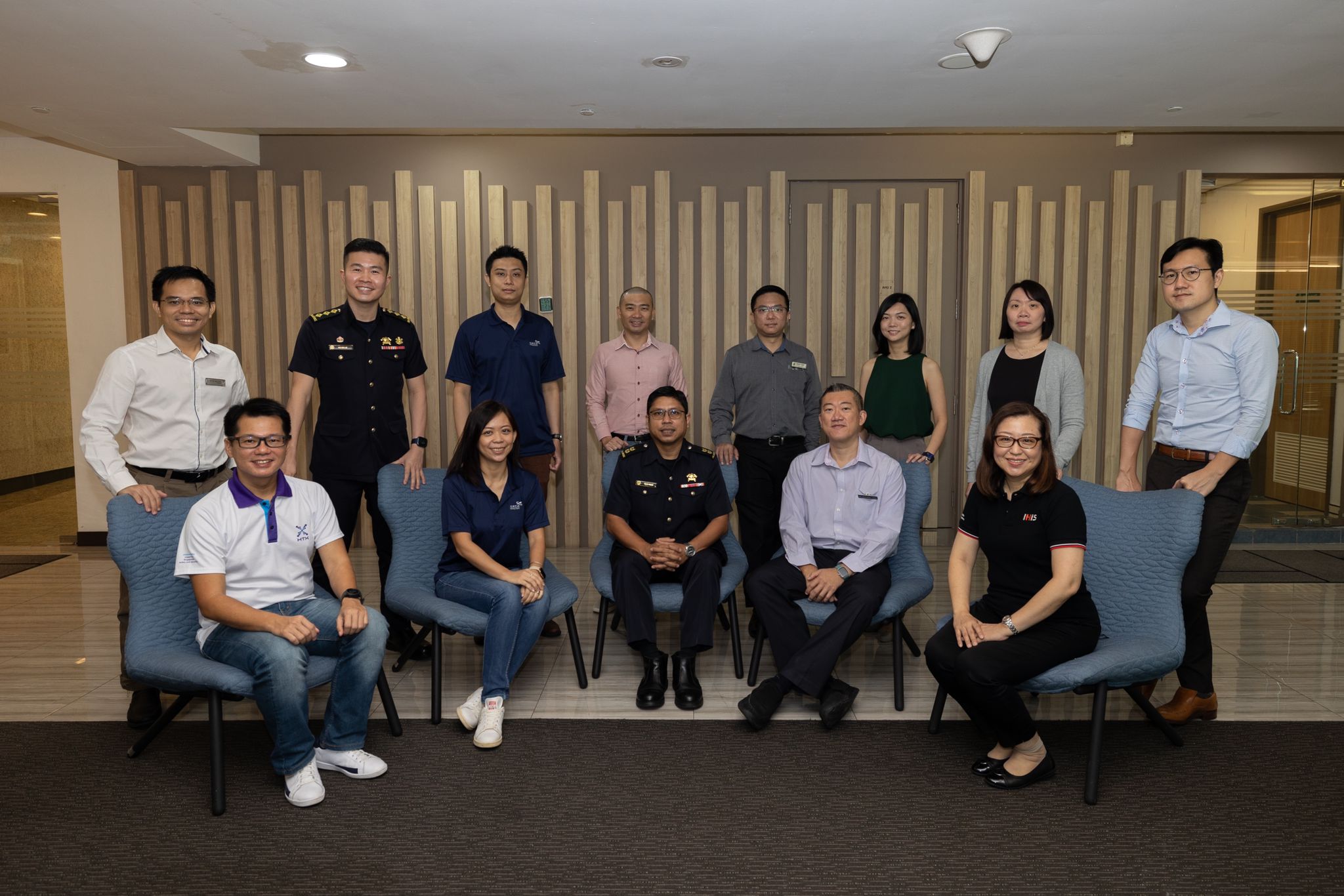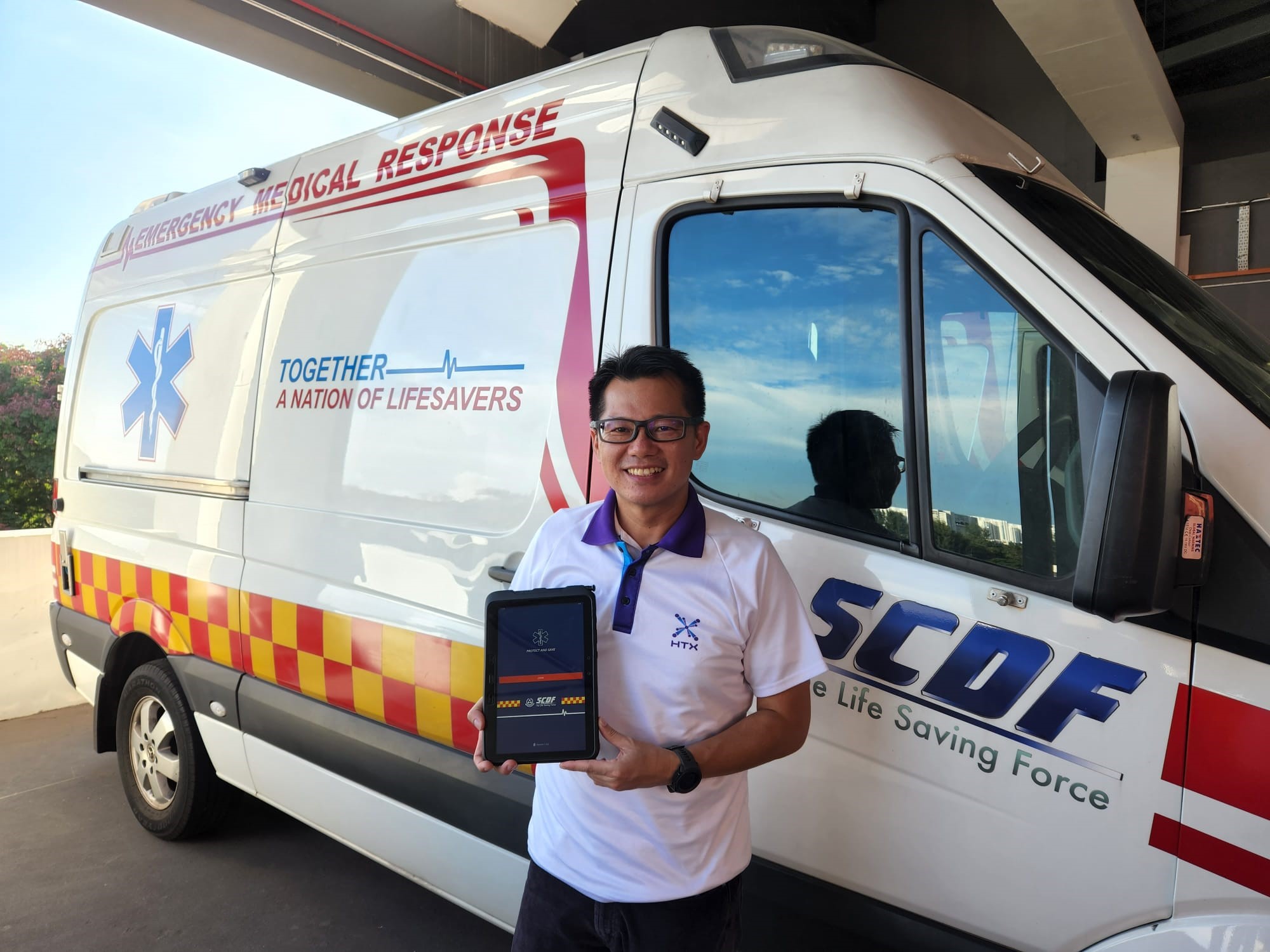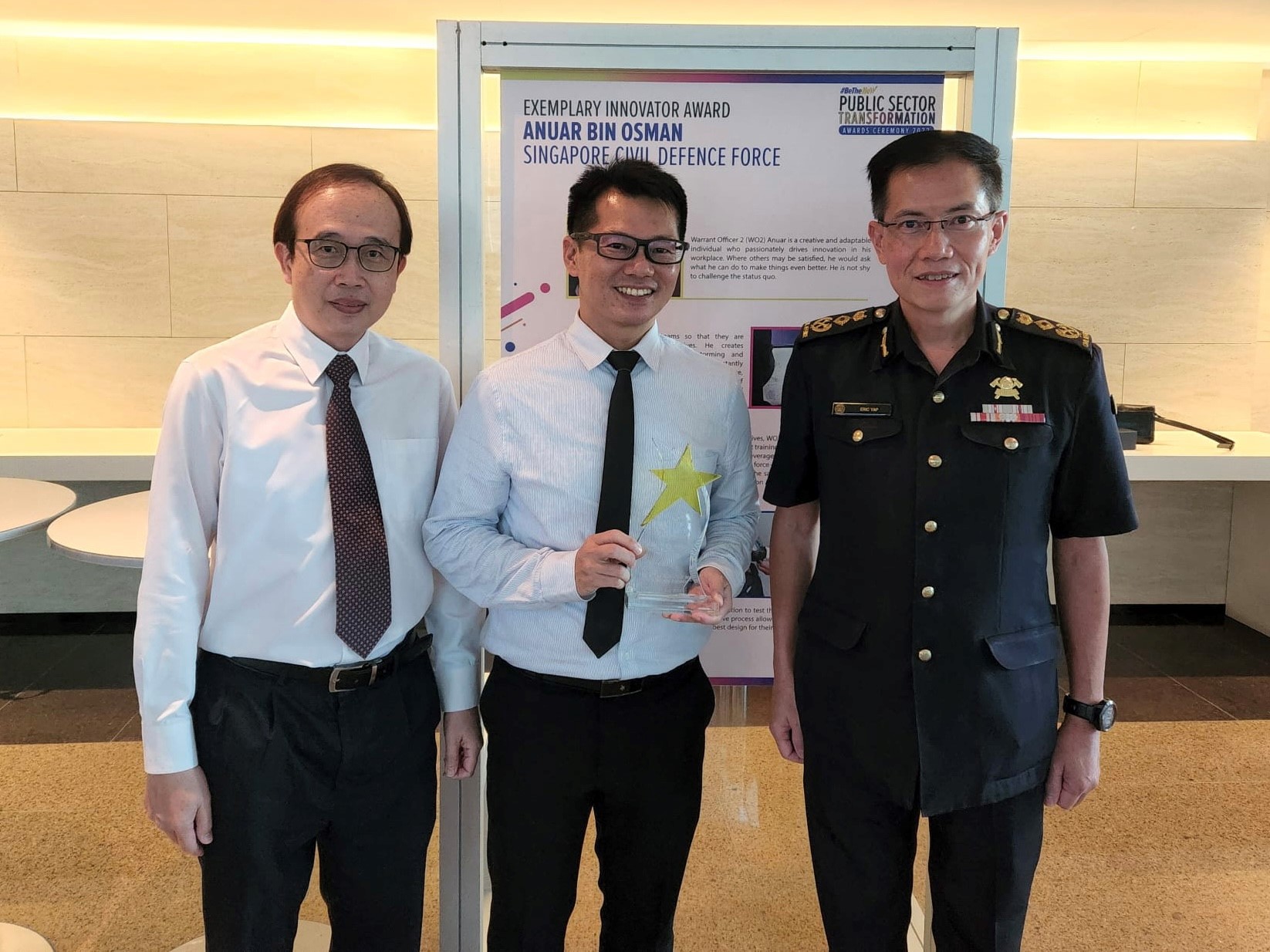
OMNII project work group comprising representatives from SCDF, MOH, DSTA, HTX, and IHiS (Photo: SCDF)
A multi-agency team comprising representatives from Singapore Civil Defence Force (SCDF), Ministry of Health (MOH), Defence Science and Technology Agency (DSTA), HTX, and Integrated Health Information Systems (IHiS), has received a Public Sector Transformation (PST) Exemplary Innovator Award for their work on Operational Medical Networks Informatics Integrator (OMNII).
The team received their award at the PST awards ceremony 2022 held on July 29. The award recognises the team’s excellence, innovative work, and collaboration in developing OMNII, a digital platform that links SCDF and hospitals, allowing them to view, document, and share patient data in real-time for pre-hospital emergency care (PEC).

The multi-agency team receiving the Exemplary Innovator Award from Mr Chan Chun Sing, Minister for Education and Minister-in-charge of the Public Service, on July 29. (Photo: SCDF)
Since its launch in August 2021, OMNII has transformed the way emergency medical services are delivered, enabling SCDF and hospitals’ emergency departments (EDs) to work together in an integrated manner for speedier and better patient care, and ultimately, saving more lives.
How OMNII works

Mr Roi Tai Kin Jiong, Head, Frontline Mobility Systems, Civil Defence Programme Management Centre, HTX, with the OMNII app on a SCDF tablet. (Photo: HTX/ Roi Tai)
With OMNII, paramedics can retrieve a patient’s medical records in the National Electronic Health Record (NEHR) enroute to the hospital if the patient’s NRIC is known. The patient’s vital signs can be shared real-time, and paramedics can pre-register patients directly into the receiving hospital’s system, allowing the emergency department to prepare ahead of the patient’s arrival, such as preparing controlled drugs and pre-ordering procedures such as CT scan or X-ray. This saves time on patient registration and enables emergency departments to anticipate resources needed for incoming cases, such as the early activation of the trauma team for traumatic injuries.
For complicated cases, paramedics can seek medical advice from the EMS support physician using the telemedicine module within the OMNII app. Advanced clinical procedures can be performed under the supervision of the duty EMS support physician, thereby improving patient outcomes and triage diagnosis.

(From right to left) SCDF Commissioner Eric Yap with HTX’s Roi Tai and Poh Seng Sian (Photo: HTX/ Roi Tai)
Origins of OMNII
OMNII has come a long way since it was first conceptualised. One of the pioneers of the project, Dr Ng Yih Yng, Chief Medical Officer, Home Team, said he had originally called it Project PANACEA, a reference to a “cure for all ailments”, when he first broached the idea of a national digital PEC platform with his boss and MOH colleagues.
Prior to OMNII, there was limited information sharing across the different PEC stakeholders and SCDF paramedics had no access to a patient’s medical history records in the field. Paramedics had to first fill in hardcopy Ambulance Case Records and transcribe them digitally after. It was also challenging for them to seek medical guidance or share information with the receiving hospital enroute.
“In an emergency, every second counts. We wanted a ground-breaking system that would finally link pre-hospital data to the rest of the healthcare system in a seamless way. It would be mobile, used in real-time operations, linked to SCDF ops centre and MOH’s NEHR network,” Dr Ng said. Future phases of OMNII may include biometric authentication to identify patients and cloud-based AI technology to guide operations and clinical treatment intelligently.

Dr Ng Yih Yng was Chief Medical Officer, SCDF, when he first mooted the idea of a national digital pre-hospital emergency care platform (Photo: Dr Ng Yih Yng)
Bringing the project to fruition was not an easy feat, especially when there was no precedent of other PEC projects for the team to take reference from. The cross-ministry project team had to overcome many policy and technological challenges to link the multiple complex systems – which included SCDF’s 995 Advanced C3 Emergency System (ACES), MOH’s National Electronic Health Record (NEHR) system and Critical Medical Information System (CMIS) as well as the registration systems from the different hospitals – seamlessly so that they could operate compatibly with OMNII.
Leveraging technology to save lives
Engineers from HTX’s Civil Defence Programme Management Centre supported the development of OMNII, including setting up the SCDF environment in the SPF ONE network infrastructure to enrol SCDF mobile devices for force-wide deployment and onboarding the OMNII mobile app to be downloaded to SCDF mobile devices for operations. HTX also worked closely with SCDF to plan out the issuance of mobile devices to SCDF frontliners.
“OMNII is a great testament of a multi-agency, cross-ministry project that embraces technology to bring about higher efficiency and better outcomes for both users and the people we serve,” said Ling Kok Yong, Director at HTX’s Civil Defence Programme Management Centre.
Watch this video to find out more about OMNII:

![[FEATURED NEWS] Beating the traffic, prioritising lives](/Cwp/assets/htx/images/listing-card-placeholder.png)